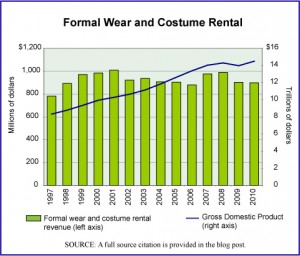The sale of natural trees for use as Christmas trees has been on the decline in the United States for some time. Most likely, the decline in numbers of trees sold annually has more to do with the rise in the use of artificial trees than to an overall decline in households and establishments decorating trees for the season. In 2009, Christmas tree production in the United States was down 60% from its pace just seven years earlier, in 2002 (a U.S. Economic Census year) when 20.8 million trees were grown for sale.
Today’s market size is the number of Christmas trees grown for sale in the United States in 2009 and their approximate value that year.
Geographic reference: United States
Year: 2009
Market size: 12.9 million trees valued at $248.9 million.
Source: Dan Burden and J.S. Isaacs, “Christmas Tree Profile,” March 2012, AgMRC, available online here.
Original source: Agricultural Marekting Resource Center, Census of Horticultural Specialties, USDA and the National Christmas Tree Association.
Posted on December 17, 2012


